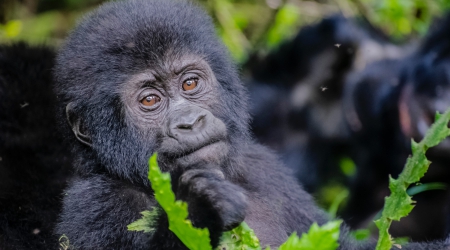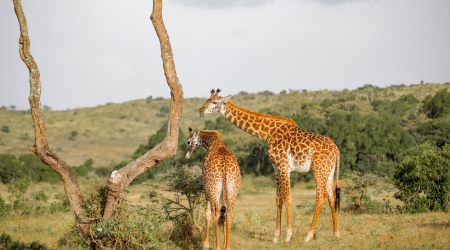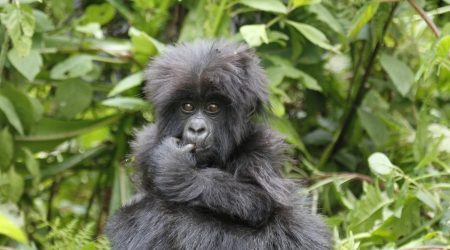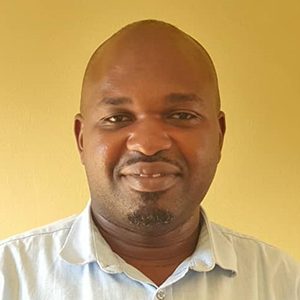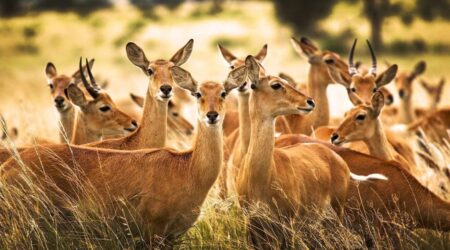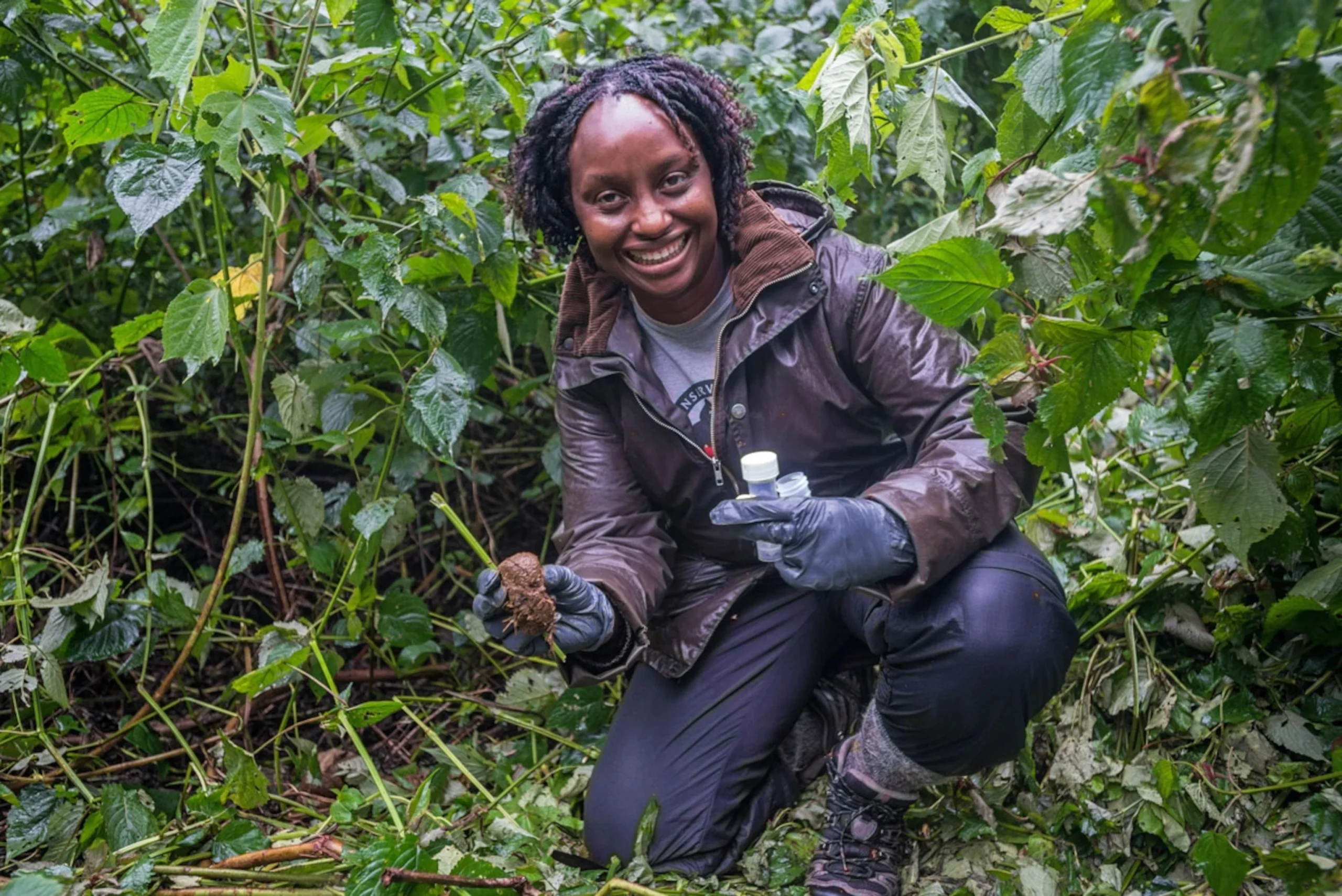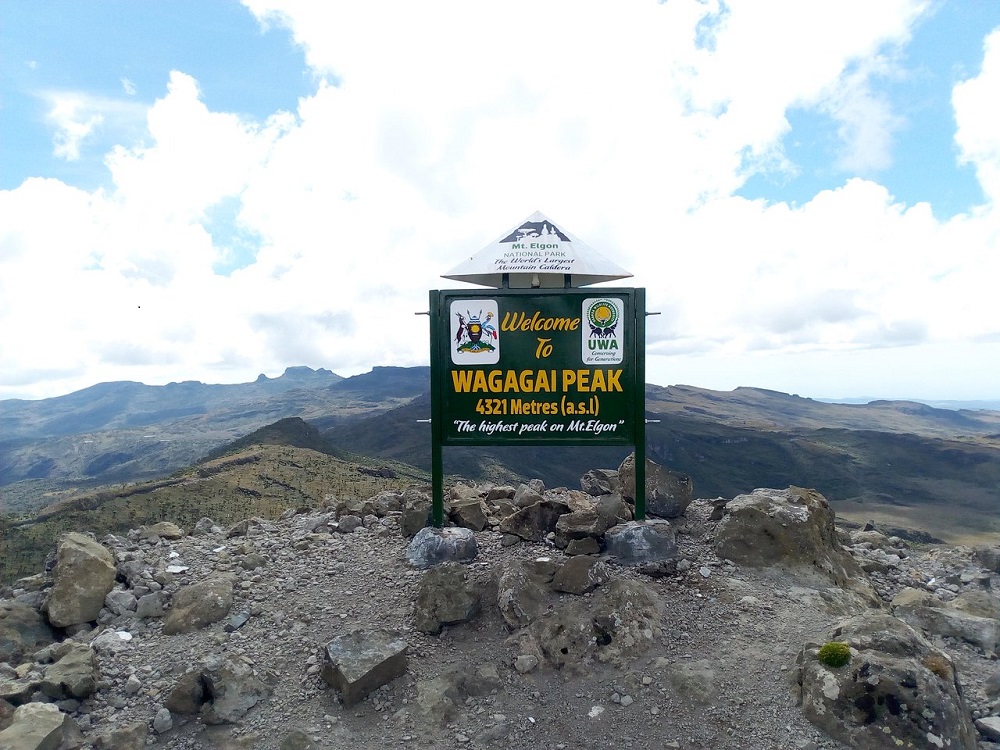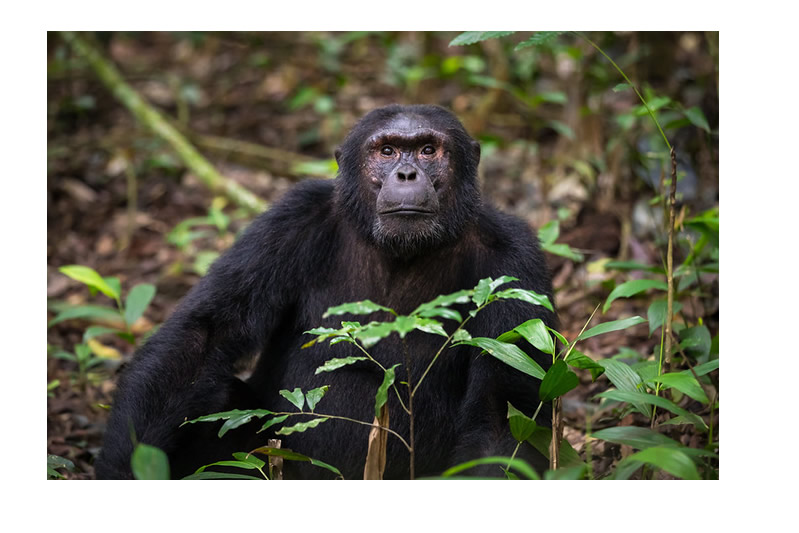In western Uganda, on the border of the districts of Kasese, Bundibugyo, and Ntoroko, is Mount Rwenzori National Park, which protects the Rwenzori Mountain range, the third-highest mountain range in Africa that runs along the western margin of the East African Rift Valley.
The park’s main entrance is in the Kasese neighborhood, and the park’s administrative offices are in Nyakalengija, which is close to Kasese.
The districts of Bundibugyo and Ntoroko also contain a portion of the park, with various access points and hiking trails.The park’s snow-capped summits, which are an anomaly so close to the equator, are one of its most recognizable features.
From rich montane forests to alpine grasslands and glacier valleys, it features an astounding variety of habitats and landscapes. The park’s beauty, which is typified by craggy peaks, waterfalls, and lakes like Lake Mahoma, is enhanced by the presence of glaciers and permanent snowfields on the higher slopes of the mountains.
The Rwenzori mountain, which has nine peaks that are sufficiently high to host glaciers, is the highest point in Uganda. Among them are Margherita (5,109 meters), Alexandra (5,091 meters), and Albert (5,087 meters).
Henry Murton launched an expedition to explore the mountains’ secrets and prove their connection to the Nile River in the late 19th century since the ancient Greeks thought these mountains were the source of the Nile River.
The Alexandrine geographer Ptolemy dubbed the Rwenzoris the “Mountains of the Moon” about AD 150. On May 24, 1888, a British explorer named Henry Morton Stanley located the Rwenzori and christened it “Ruwenzori,” a native term that he noted meant “Rain-Maker” or “Cloud-King.”
The park was established in 1991, designated as a gazetted area in 1994, and designated a Ramsar site in 2008. A number of initiatives have been made to save Mount Rwenzori National Park’s distinctive flora and animals as well as the local communities, including the Bakonjo, in order to preserve its unique biodiversity and natural heritage.
The park is managed and conserved by the Uganda Wildlife Authority (UWA), which collaborates closely with the neighborhood to advance eco-friendly behaviors and projects for community-based tourism. For local communities to become less reliant on park resources, conservation initiatives emphasize anti-poaching operations, reforestation, environmental education, and the promotion of alternative livelihoods.
Hiking routes in the park
To approach the mountain peaks and take in the stunning views and terrain, there are primarily two hiking routes that are employed. The Bakonjo people’s most well-known and historic path is the Rwenzori Central circuit. Its ease and lack of difficulty for inexperienced hikers are the main reasons it is regarded as the best path to the peak.
The views of gateway peaks like Baker and Speke are just one of the many benefits it offers to offer hikers. Because hikers can take a variety of pathways along this route, they can explore more of the mountain, which makes the mountain’s ascent and descent particularly impressive.
On the other hand, Rwenzori Trekking Services is in charge of the 7-8-days Kilembe Trail. It was inaugurated in 2009 with the building of new park cottages and is also referred to as the southern circuit Trail. Kilembe, which is at a height of 1,450m, marks the trail’s starting point. You must use a lot of energy hiking up it since it is challenging and difficult, very steep. Although Professor Scott Elliott attempted it for the first time in 1895, he was unsuccessful. It was opened as an alternate path for Rwenzori mountaineers to utilize in order to climb the peak.
Communities around the park
The cultural framework of the area surrounding Mount Rwenzori National Park is formed by these people, together with other ethnic groups and subgroups, and they support the region’s diversity, history, and sustainable development.
Initiations for community-based tourism and cross-cultural interactions are also made possible by their closeness to the park. These include the numerous Bakonjo villages situated in the Bakonjo community, which is located in the Kasese District and serves as the major entrance to the Park.
The Bundibugyo District, which borders the park to the north, is where the Bamba village is located. The Kasese District is home to the majority of the Basongora people, particularly in the lowland regions surrounding the park, which offer adequate grazing fields for their cattle. The Batuku community, which has historical ties to the area, is primarily found in the Ntoroko District, which is to the north of the park.
Ntoroko is renowned for its Batuku communities and farming methods, which include the development of terraced gardens on the Rwenzori Mountains’ slopes.
How to access Mountain Rwenzori
By car: The journey begins either at Entebbe International Airport or Kampala, Uganda’s capital city. On the Kampala-Mbarara Highway, you will travel westward towards Mbarara from Entebbe or Kampala. Once in Mbarara, continue driving along the same road until you reach Bushenyi, where you should turn around and head for Kasese.
Depending on the amount of traffic and the state of the roads, the trip from Kampala to Kasese is about 350 kilometers (217 miles) long and takes 6-7 hours. When you get to Kasese town, you can take a local taxi or arrange for private transportation to take you to the park’s gate. Kasese to Mount Rwenzori National Park is approximately 25 kilometers (15.5 miles) north of Kasese town, in the Nyakalengija region, where the park entrance is found.
By air: Kasese Airport, which is the nearest airport to the Park, is reachable from Entebbe via a domestic flight. From Entebbe to Kasese, the flight takes around an hour.
The major entrance to the park, Kasese, is where you’ll find Rwenzori Trekking Airport. The domestic carriers AeroLink Uganda and Fly Uganda offer service between Entebbe and Kasese. You can arrange ground transportation from there to get to the park’s entrance, which is around 25 kilometers (15.5 miles) away.
Activities done in the park
Hiking is a popular activity that may be done while in the park. To reach the 5,109-meter top, one can take either the Kilembe Trail or the central circuit. Other activities include Nature walks, cultural interactions with locals and various tribes in the area surrounding the park’s boundaries, photography, research about different plants, and bird watching for some endemic birds.
Other Additions
While planning to hike Mt Rwenzori, One can choose to visit Queen Elizabeth National Park in Kasese, situated 26 kilometers from Rwenzori National Park. Here, the tourist will be able to see climbing lions, four of the big animals like elephants and lions, and the Kazinga Channel, occupied with hippos, buffaloes, crocodiles, and a variety of bird species
Visit Semuliki National Park. This park is 58 kilometers north of Rwenzori Park. It is famous for the female and male hot springs and bird watching.
The park is wonderfully endowed with a diversity of resources, however, most visitors prefer to forgo it and instead visit Kibale National Park. The park was given the name “birders haven” since it is well-known for bird watching, especially because of the relatively distinctive bird species. some birds include Maxwell’s black swallow, Lemon bellied Crombec, blue-billed malimbe, Leaf love, Red-bellied Malimbe, Blue-billed malimbe, Swamp palm bulbul, and white-throated blue swallow.
There is also the option of visiting Bwindi Impenetrable National Park, which is located approximately 200 kilometers southeast of Rwenzori Mountains National Park. This park is famous for mountain gorillas, almost half of the world,s mountain gorilla population live in this park, and other animals and primates like forest elephants, chimpanzees though they are rarely seen and the rich culture of the Batwa.
With its three Virunga mountain ranges, Sabinyo, Muhavura, and Gahinga, Mgahinga National Park is a good option for less strenuous hikes in Uganda. You may go trekking for mountain gorillas, golden monkeys, and the Batwa trail, which is the most cultural activity in the park.
A jewel waiting to be found is Mt. Rwenzori National Park. This park offers a memorable experience thanks to its fascinating historical history, the thriving villages that surround it, easy access, a variety of hiking trails, and thrilling activities.







